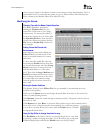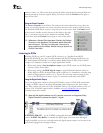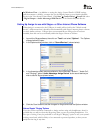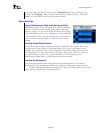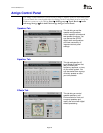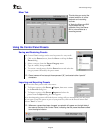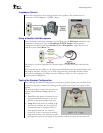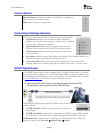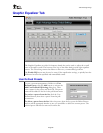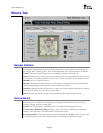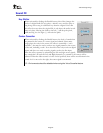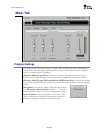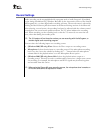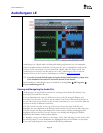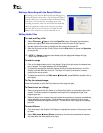
www.Turtle-Beach.com
Page 24
Volume Section
Master Volume: Controls the volume of the speakers or headphones.
Pan: Controls left and right balance.
Mute: Mutes speakers or headphones.
Control Panel Settings Summary
This section summarizes the state of important control panel settings:
Equalization: Indicates that the Master Graphic Equalizer is
enabled, therefore the system frequency response may be modified
from its “flat” setting by the Equalizer.
Speaker Position: Indicates that the speaker positions in the
Speaker Position section of the Effects Tab have been moved.
Environments: Indicates that the Environments in the Effects
Tab are enabled.
Key Shifter: Indicates that the Pitch Shifter in the Effects Tab is enabled, therefore the
digital audio output may be being altered by this effect.
Center Canceller: Indicates that the Center Canceller effect in the Effects Tab is
enabled, which removes audio signals that are panned to the center of a stereo source.
S/PDIF Digital Output
The S/PDIF digital output is used to connect Amigo to digital speakers and A/V receivers
by inserting the optical adapter. Use a TOSLINK optical cable to connect the adapter to the
corresponding optical digital input on the external device. The TOSLINK cable is available
at www.TurtleBeach.com or at most consumer electronics retailers.
⇒ When the S/PDIF output is active, a red light will appear inside the S/PDIF
Out/Headphone jack, or at the end of the TOSLINK cable.
When using the digital output, select the S/PDIF output mode in the
pull-down menu:
S/PDIF Out Off: S/PDIF output is turned off, so there is no
digital signal.
S/PDIF Out 48kHz: Digital audio is transmitted in S/PDIF format at 48kHz sample
rate. When this setting is selected, a red light will appear in the S/PDIF output jack.
In Windows Vista, “Digital Output” should be set as the default in Vista’s “Playback
Devices” window by clicking Start Æ Control Panel Æ Sound.



